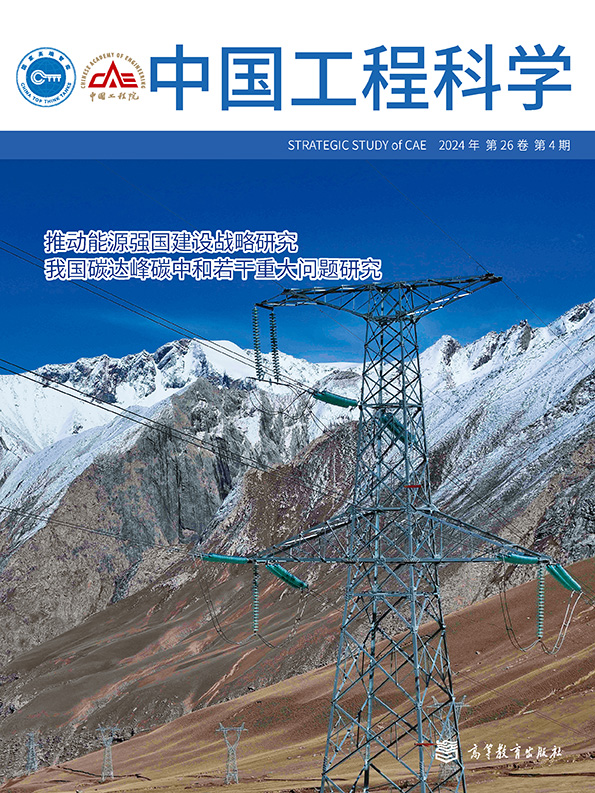Optimizing the Route to the North of the Yellow River for the Eastern Route of the South-to-North Water Diversion Project
引用次数: 1
Abstract
Since the Overall Planning of the South-to-North Water Diversion Project was approved 20 years ago, the supply and demand situation of water resources and water ecological environment problems in North China has undergone profound changes. Therefore, optimizing the subsequent route becomes significant for adapting to the new development situation in North China and for implementing major national strategies. The Beijing‒Tianjin‒Hebei region is the major water-receiving area of the follow-up project of the eastern route of the South-to-North Water Diversion Project. Analyses of the long-term supply and demand trend, spatial distribution, and structural characteristics of the Beijing‒Tianjin‒Hebei region exhibit that from the long-term supply and demand trend, the gap of water resources in this region is 3.9×10~6×10 m, and the growth of water demand is mainly contributed by the central and western urban areas, which are also key areas for implementing national strategies such as the construction of the Xiongan New Area. Moving water supply centers westward by establishing a new route into Beijing via Baiyang Lake while using existing river channels allows the route of the project to cover the shallow groundwater overexploitation areas to the largest extent, which is also 收稿日期:2022-06-28;修回日期:2022-08-15 通讯作者:何凡,中国水利水电科学研究院水资源研究所教授级高级工程师,研究方向为水资源管理、规划与战略;E-mail: hefan@iwhr.com 资助项目:国家重点研发计划项目(2021YFC3200204);国家杰出青年科学基金项目(51625904);国家自然科学基金项目(52061125101) 本刊网址:www.engineering.org.cn/ch/journal/sscae南水北调东线工程黄河北线优化
《南水北调总体规划》立项20年来,华北地区水资源供需状况和水生态环境问题发生了深刻变化。因此,优化后续路线对于适应华北地区新的发展形势和实施国家重大战略具有重要意义。京津冀地区是南水北调东线后续工程的主要受水区。对京津冀地区长期供需趋势、空间分布和结构特征分析表明,从长期供需趋势看,京津冀地区水资源缺口为3.9×10~6×10 m,水资源需求增长主要由中西部城区贡献,中西部城区也是实施雄安新区建设等国家战略的重点地区。向西移动供水中心通过建立一个新的路线到北京通过白洋淀在使用现有河道允许项目的路线覆盖了浅层地下水过度开采地区最大的程度上,这也是收稿日期:2022-06-28;修回日期:2022-08-15通讯作者:何凡,中国水利水电科学研究院水资源研究所教授级高级工程师,研究方向为水资源管理,规划与战略;电子邮件:hefan@iwhr.com资助项目:国家重点研发计划项目(2021 yfc3200204);国家杰出青年科学基金项目(51625904);国家自然科学基金项目(52061125101)本刊网址:www.engineering.org.cn/ch/journal/sscae
本文章由计算机程序翻译,如有差异,请以英文原文为准。
求助全文
约1分钟内获得全文
求助全文
来源期刊
自引率
0.00%
发文量
4428
期刊介绍:
"Strategic Study of CAE" is supervised by the Chinese Academy of Engineering, hosted by the Strategic Consulting Center of the Chinese Academy of Engineering and Higher Education Press Limited Company, and published by the Strategic Study of CAE Editorial Department. This journal is one of the "1+9+1" series of journals of the Chinese Academy of Engineering, and its editorial board is the Consulting Working Committee of the Chinese Academy of Engineering.
This bimonthly journal is published in Chinese. It is a core Chinese journal and a core journal of Chinese science and technology, included in the Chinese Science Citation Database (CSCD), the Japan Science and Technology Agency (JST) database, and the Swedish DOAJ database.
The journal is positioned as an academic journal for strategic consulting in engineering and technology, mainly publishing academic papers that reflect the results of strategic consulting research in China's engineering and technology. It aims to provide counsel for the government's scientific decision-making, guidance for the industry's scientific development, and references for related academic research.

 求助内容:
求助内容: 应助结果提醒方式:
应助结果提醒方式:


